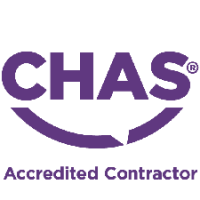Background
An area of approximately 300sqm of Japanese Knotweed was identified within a proposed development area.
The location of the Japanese Knotweed was within planned development areas.
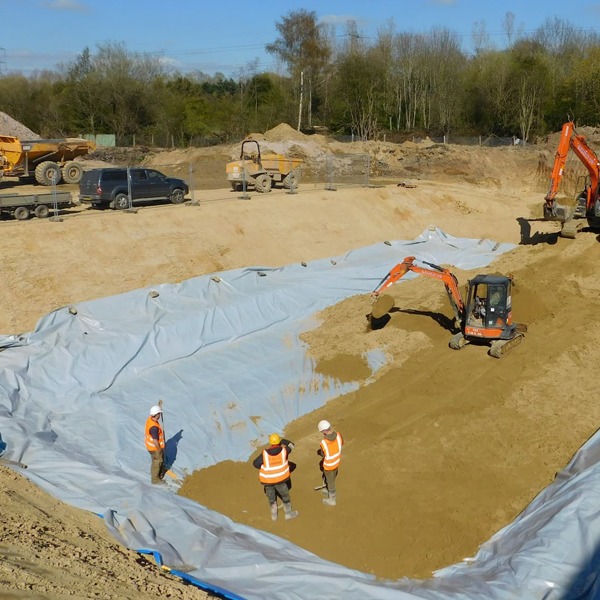
That being the case, a form of excavation was required, to ensure that the area of ground works would be free of any Japanese Knotweed material, as although herbicide control options will eventually bring the Japanese Knotweed under control, the remaining rhizome and crown still remains within the soil and can be regenerated when disturbed.
The estimated volume of excavated material was likely to be 700 cubic meters. The developer was facing potential landfill costs of hundreds of thousands of pounds. Working with the project managers we identified a suitable area within the development that could accommodate a cell burial.
Cost advantages for cell burial
Off site disposal of excavated material, although provides an immediate answer, does attract high costs for disposal and in this case may have been hundreds of thousands of pounds.
Cell burial, provided there is a suitable area for the cell, can be very efficient, like off site disposal provides an immediate solution but saves the high landfill costs, provided a suitable area can be located that can accommodate the cell.
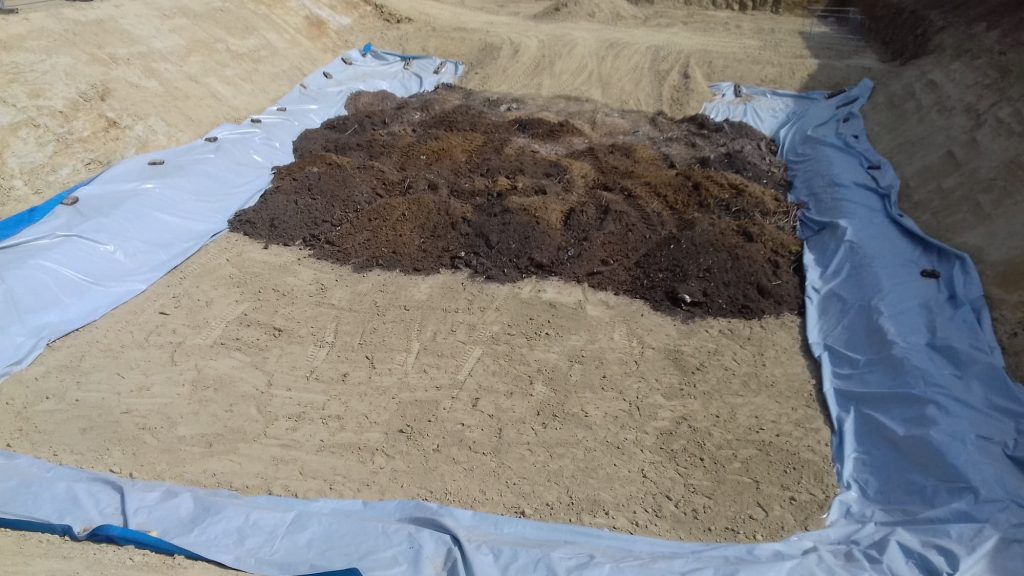
In this case, using the on site ground contractors we saved the developer hundreds of thousands of pounds and delivered the control programme for a fraction of the estimated costs of using landfill.
By using on site cell burial technique the developer can also apply for tax relief through the Land Remediation Tax Relief Scheme, delivering further cost savings.
What was done?
Conservation Land Services Ltd identified and recorded all the areas of Japanese Knotweed.
Conservation Land Services Ltd then treated the areas of Japanese Knotweed with a herbicide programme in preparation for the excavation as per the Property Care Association Code of Practice.
Conservation Land services Ltd coordinated the project with the local Environment agency officer on behalf of the contractor. Haulage routes were agreed prior to the excavation and following the excavation these haulage routes were inspected for any Japanese Knotweed material. There was an agreed protocol of not filing the vehicles transporting the excavated material no more than three quarters full. This was to prevent any material falling out of the vehicle whilst being transported to the burial cell.
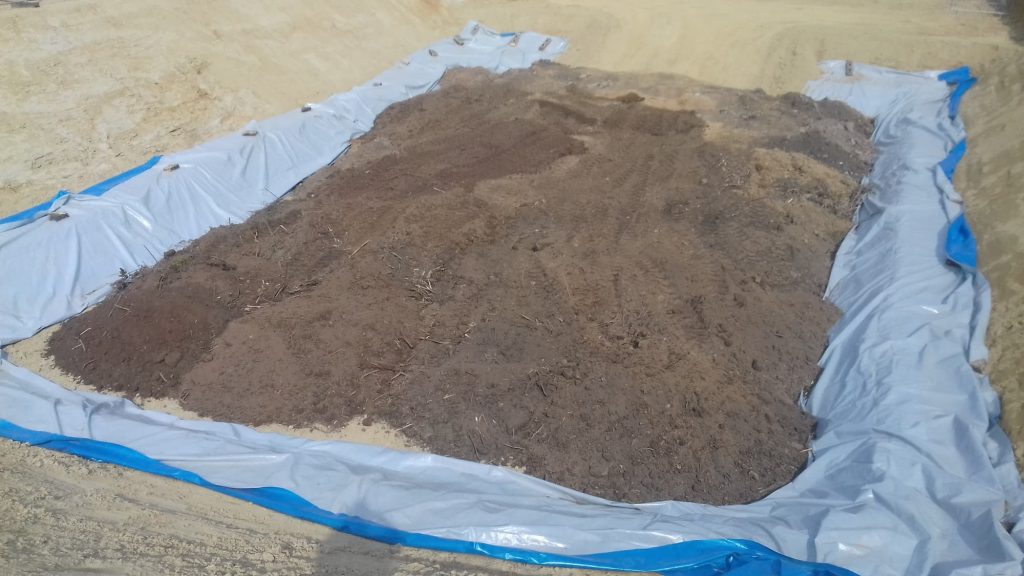
The cell was lined with sand to act as a protective layer for the cell membrane. A geotextile layer was put between the sand and the cell membrane to act as an additional protective layer, to guard against any punctures of the cell membrane.
The cell membrane used was Dendro-Scott:UK00003004701, Class 17, a polyethylene-based product specifically designed for Japanese Knotweed (Reynoutria japonica) and other invasive weeds.

A further sand layer was then spread over the cell membrane to protect the membrane from any sharp objects. Robert Mitchell, Director Conservation Land Services Ltd and a Property Care Association Certificated Surveyor in Japanese Knotweed over saw the excavation of each area of Japanese knotweed (Reynoutria japonica). He also oversaw the filling and sealing of the cell. Each area of Japanese knotweed (Reynoutria japonica) was excavated by doing an initial 400mm strip and then any remaining rhizome was identified and excavated until no further evidence was found, plus an appropriate buffer zone.
Post completion of the excavation the excavated material was sealed within the cell with a top, making it a fully encapsulated cell.The cell was then capped with a layer of sand prior to the back fill taking place, with the coordinates of the cell being recorded for future reference.
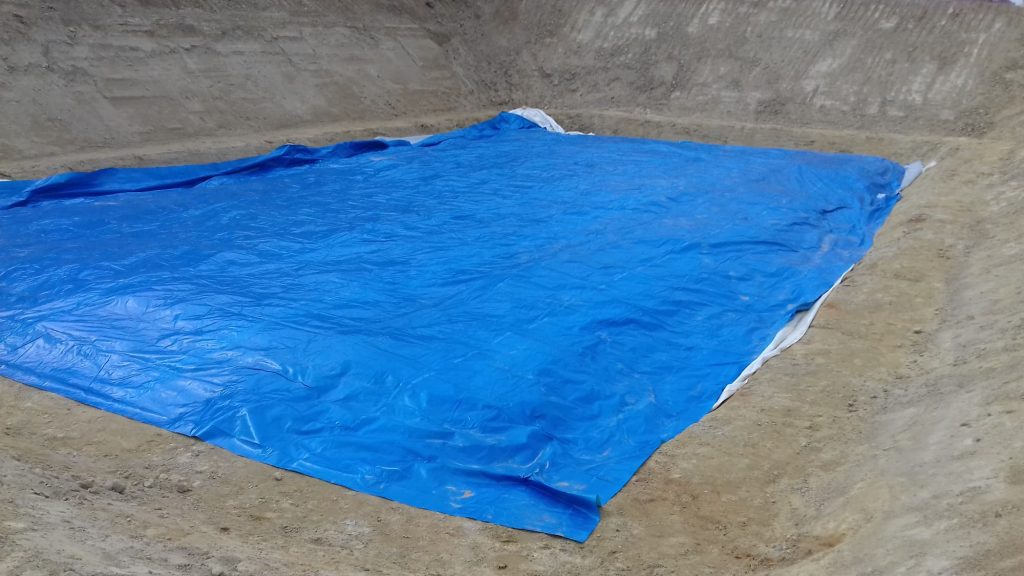
What happens next?
Conservation Land Services Ltd will continue to monitor the areas for any further evidence of Japanese Knotweed regrowth.
Once the area has had two full years of monitoring without any evidence of Japanese Knotweed growth then it will be deemed complete .
Advantages.
The control is immediate in that the Japanese Knotweed has been removed from the area required for ground works to continue.
Considerable cost savings have been made by not sending the excavated material to an off-site licensed landfill.


